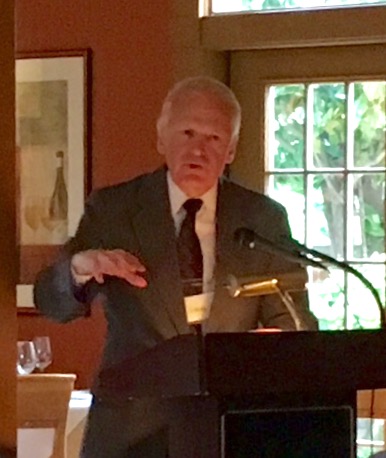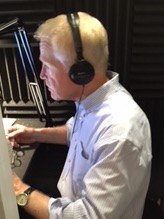Your audience will always be appreciative if you give them something they want. To be fair, what they want might not always be obvious and the audience members might not be sure of it themselves. You need to clarify the benefit to the audience and deliver and make it clear that they will gain something from what you offer.
For example, one of the best presentations I ever saw was a presentation on how to give a presentation. The salient point was that a speaker needs to capture attention with a good opening and not clutter it up by droning meaningless thank-yous and chit-chat at the beginning.
The presenter was greeted with polite applause as he took the lectern, but cut it off and said, “I haven’t earned that yet. But I will.”
And he went right into his speech – a crackling cascade of useful information, beginning with the lesson to start the speech cold and don’t thank people. Save that until later.
The point is that I had a general idea of what I needed to know but not the specifics. The presenter had a fair idea that most of the audience were relatively experienced communicators who didn’t require elementary instruction but needed some quick techniques to up their games. So he provided us with a technique that works well in the hands of a reasonably competent presenter, he did it right off the bat, and in the process captured our attention at the beginning so he could effectively lead us through the middle and end.
Businesses and organizations routinely do what they call “needs assessments” to figure out what their customers want. It becomes a jargon-heavy process, with needs sometimes defined as essential things for “well-being” or things that will create a state of “deficiency or deprivation” if denied. You can assess needs by doing surveys or, in a method that always appealed to me, simply talking to people.
Advertising agencies typically convene focus groups to assess the needs of their audience; let me tell you one story that perfectly illustrates what you’re trying to do here.
Back in the 1990s something called the California Milk Processor Advisory Board hired a veteran advertising executive to help stanch the loss of customers for milk.
The problem was that choices of beverages in typical stores were multiplying exponentially – with introduction of new soda flavors and new types of beverages such as sports drinks. But there is not a lot you can do with milk. You can flavor it with chocolate or strawberry but beyond that it would just get weird. Nobody’s going to drink carbonated milk, and since it doesn’t keep forever it is not really portable.
Armed with the information that most milk consumption takes place in the home, a San Francisco advertising agency set up focus groups (supervised conversations with groups of typical customers) to determine what those people’s needs were…what actually prompted them to pay attention to the need for milk.
The groups didn’t produce much that was useful until something happened by accident: It was getting late and one participant noted that if he didn’t leave in time to make it to the store to buy milk there would be hell to pay the next morning.
And there you have one of the Eureka Moments of “needs assessments.” What motivates people to want to buy milk is the fear of what happens if they run out. (I don’t know about you, but when my children were little and I didn’t have milk they gave me the impression they were going to drop a dime on me and call a social services agency.)
You know the rest of the story, because you certainly remember the “Got Milk” commercials, entertaining mini-dramas in which a man couldn’t win a telephone quiz contest because he was chewing on a peanut butter sandwich and ran out of milk. Another commercial featured a snarling business executive who is run over by a bus and winds up in what appears to be a big kitchen in the sky, fully stocked with milk cartons and giant chocolate chip cookies.
“Heaven,” he muses, stuffing himself. And then, naturally, he reaches for the milk carton. But it’s empty. And so are all the rest.
The realization is horrifying. “Where am I?” he asks — as flames begin to engulf the Got Milk Logo.
And there you have the central lesson in needs assessment. Deduce what scares people, what they feel deprived without.
Figure out what hurts – and offer a solution.
Maybe you’ll have to explain why they should feel deprived, or why they should worry, and that’s OK. But without that hook, without that perceived need you are filling, the audience will have no real interest in listening to you.
Gauge, as best you can, what the audience needs. Talk with the event organizer, or people who will be at the meeting. What bothers them? What solution are they seeking, for what problem?
Maybe they are tense and upset, and need a laugh. Perhaps they are worried about meeting sales quotas, and need some advice on how to head off failure. It may be that they are concerned about a new policy, and need assurance that it will be in their best interests. It could be the case that they are worried about loss of productivity in their office, and need the type of product you just happen to sell.
Or possibly they are concerned about giving a presentation, in which case you can advise them to buy my forthcoming book, Present Like a Pro.




